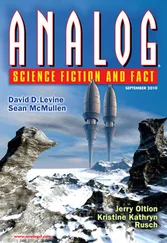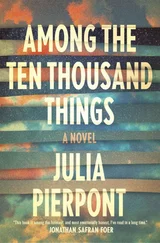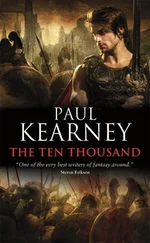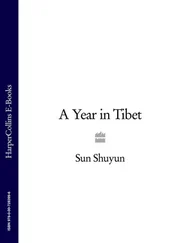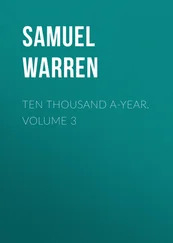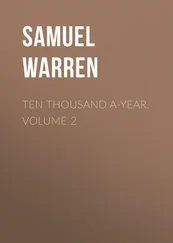Xuanzang thanked the king profusely for the invitation, but he could not accept it. He must go to India to find out what was missing from the teachings in China, he explained. But the king was unyielding: ‘It would be easier to shift the mountains of Pamir than to make me change my mind.’
Seeing how keen the king was to keep the Chinese master, his ministers also put their minds to it and came up with an ingenious idea. Xuanzang was young and single; so was the princess royal. She was beautiful, pious, cultivated, and very fond of Chinese culture and dress. Surely Xuanzang could not refuse such a wonderful bride. When the king broached the subject with his sister, she was only too happy to oblige. She had listened to the clear, deep and profound preaching by the handsome Chinese master. She had nothing but admiration for him; and to spend the rest of her life with such an enlightened man would indeed be yuan , her destiny.
But Xuanzang explained to the king that he regarded it as his destiny to fulfil his mission to bring back the sacred sutras that were needed in China and circulate them to his fellow-countrymen. Surely the king would not stand in the way of his destiny?
But the king – typically for kings – was unused to his decrees being questioned, not to mention defied. He grew angrier with Xuanzang’s obstinacy until at last he issued an ultimatum: ‘I am determined to retain you by force, or else to have you escorted back to your own country. I invite you to think the matter over; it is best to accept my offer.’
Without hesitation, Xuanzang replied: ‘The king will only be able to keep my bones; he has no power over my spirit nor my will!’
To make the king let him go, Xuanzang began a fast. For three days, he meditated and refused to take food or water. On the fourth day, he was getting weak and had trouble breathing. The king was shocked. He had seen many monks come and go through his kingdom, but never one like Xuanzang – so learned, spiritual and determined, and so fearless, ready even to sacrifice his life for the faith. A true Buddhist, a living example of the enlightened mind. As the Dhammapada , the Sayings of the Buddha, described:
From attachment springs grief,
From attachment springs fear,
For him who is totally free
There is no grief, and where is fear?
The king begged Xuanzang to eat. He would let him continue his journey; perhaps the master could contemplate stopping in Gaochang on his way back from India. Xuanzang had already decided to do that: he was deeply moved by the king’s piety and devotion to the Buddha, and the sincerity of his wish for a better understanding of the Dharma. While he was taking some food, the king looked at him, weakened and exhausted by his hunger strike and months of travelling in secret and getting lost in the desert. He recognized the greatness of this young man but wondered whether he could achieve his purpose penniless and alone. In a remarkable reversal, he decided to help the young Chinese monk. He asked Xuanzang to preach for a month, while preparations were being made for his journey.
Fat Ma was melting in the midday sun. He suggested we have lunch in a restaurant outside the gate where we parked the car. It was an oasis in itself; everywhere you looked there was green: pots with fragrant-leaved plants dotted over the floor, an overhead trellis spilling grapevines and casting a welcome weave of shadows on the ground. The grapes hung low enough for you to reach up and pick them. Water gushed in runnels at your feet, circling the place. After the dust, the heat and the ruins, I felt I could breathe again. We ordered a real Silk Road meal: noodles from China, Turkish kebabs and nans from India. After a couple of cold beers, Fat Ma revived, joking and calling for the car-radiator to be filled with water. We were doing just what Xuanzang and all Silk Road travellers would do when they arrived in Gaochang: refuelling with shade, water and food.
Here merchants and travellers from as far as Syria and southern India would check into one of many caravanserais inside the city. After a wash and a meal, they would inspect their pack animals to see if they needed to change them for healthy, rested ones, or simply to trade in one type of animal for another more suitable for the next stage of the journey – Bactrian camels were the favourite for this stretch of the Silk Road: they could sniff out subterranean springs and predict sandstorms; if they bunched together and buried their mouths in the sand, you knew one was coming. In the bustling bazaars the travellers would sell their goods, buy local specialities and stock up on food and supplies. If they had completed a profitable deal, they could go into one of the many taverns. Gorgeous women from Kucha, the next oasis, and even from as far away as Samarkand, entertained them with whirlwind dances and melodious songs, as they filled their glasses with the delicious Gaochang wine made from ‘mare’s teat’ grapes.
Gaochang, like all oasis kingdoms on the Silk Road, depended on levies from the caravans passing through. On entering the city gate, everyone was asked to show their passes issued in their country of origin. Then the merchants would be charged on the spot by their animal loads and then again when they sold their goods in the bazaars. A camel could carry an average of three hundred pounds, and a horse or a donkey half of that. Caravans could be as small as a dozen travellers or as big as several thousands – the bigger, the safer because the merchants could afford to pay for protection. An annual customs report of Gaochang from Xuanzang’s time recorded buoyant trade in large quantities: a man selling five hundred and seventy-two pounds of spices, another eighty pounds of raw silk and a third eight pounds of silver. The list goes on, giving us the most direct evidence of how the oasis kingdoms like Gaochang earned their income. The wealth of Gaochang was such that when China conquered it in the first century BC, its annual revenues could finance the defence and running costs of the entire Western Region.
After lunch we set out for Bezeklik. ‘The locals call it “the place with paintings”,’ Fat Ma said. It is one of the biggest Buddhist cave complexes in the Western Region, dating from the fifth century to the thirteenth century when Islam became the dominant religion in the area. Originally built by monks for meditating in a quiet valley, it soon became a famous centre of worship for lay followers, and the travellers of the Silk Road, who would pray for a safe journey by making offerings to the images of the Buddhas and Bodhisattvas. Xuanzang did not mention it in his record but Fat Ma was absolutely certain that he visited it. ‘It was just over twenty kilometres from Gaochang city,’ he said, ‘and it would have taken only an hour or two on horseback. The king was so keen to impress Xuanzang, I’m sure he would grab any opportunity to persuade the monk to stay. Judging from the pictures of the murals, it must have been a splendid place.’
I also had seen pictures of the Bezeklik murals and they looked spectacular. Larger than life-size, they were painted in meticulous detail and exuberant colours and seemed as if they had been finished yesterday. Kings and queens, princes and princesses, Indian monks, Persian and Roman traders stood piously in their best costumes on the side walls, facing the altar where the image of the Buddha would be. Their names were written by their heads: they were the donors who had paid for the caves and the splendid paintings. Those murals were mostly painted after Xuanzang’s time, but a Tang dynasty record of Gaochang gives us a vivid account of Bezeklik, which it called Ningrong Cave Monastery. This is undoubtedly the Bezeklik Xuanzang would have seen. ‘Everywhere you look, there are mountains. Long, open corridors connect the monastery and the caves, with a clear stream running rapidly down below. Tall trees, morning mist and clouds make them invisible at first sight. This monastery has been known for a long time.’
Читать дальше

